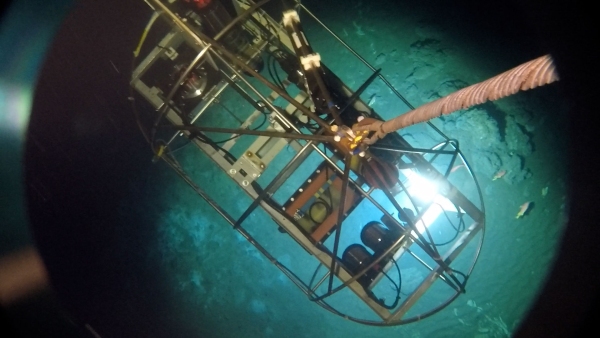RV Tangaroa voyage update
Tangaroa is off the west coast of Tongatapu collecting seawater to analyse for trace metal.
1 May 2022
Trace metal concentrations in the open ocean are similar to one sugar cube dissolved in an Olympic-sized swimming pool. Therefore, when we sample for trace metals from a metal ship, we must be extremely careful to avoid contamination. One technique used for this is called a trace metal “fish” (named for its fish-like appearance!). The instrument is deployed on a crane with clean wiring as far away from the ship as possible. A sampling tube runs through the device and clean seawater is pumped to a clean trace metal lab located on the ship’s deck. This is where the sampled water is carefully processed by our team of technicians and scientists wearing full body suits and special gloves to protect the samples from contamination.
After taking these water samples, some more seafloor was mapped using the multibeam echo sounder around the site of the international communications cable break. During the time spent seafloor mapping, the underwater video from the Deep Towed Imagining System (DTIS) taken yesterday over the hydrothermal mussel beds was analysed. We saw the DTIS passing through clear water to thick, dense, black smoke that obscured visibility. The smoke contained sulphur-rich hot water coming out of the seafloor through the hydrothermal vents, which is what the mussels feed on.
It is now time to make our way back home to New Zealand. Unfortunately, after the amazing weather we’ve had in Tonga, bad weather arrived in the form of a tropical storm that coincided with our arrival at our next study site. The conditions were too rough for any sampling to be undertaken, so Tangaroa deviated its route home to return to a previously area. Hopefully, the conditions on site will allow us to take further sampling.


